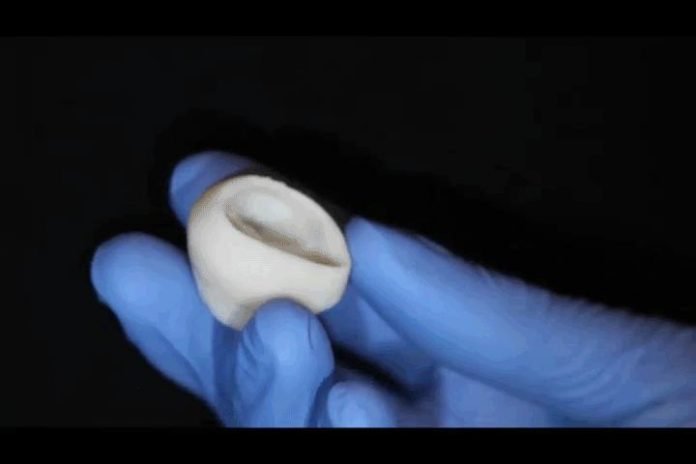
In a new study, researchers report details a new technique allowing anyone to 3-D bioprint tissue scaffolds out of collagen, the major structural protein in the human body.
This first-of-its-kind method brings the field of tissue engineering one step closer to being able to 3-D print a full-sized, adult human heart.
The research was conducted by a team from Carnegie Mellon University
The technique is known as Freeform Reversible Embedding of Suspended Hydrogels (FRESH).
It has allowed the researchers to overcome many challenges of the existing 3-D bioprinting methods and to achieve unprecedented resolution and fidelity using soft and living materials.
Previous research has shown that each of the organs in the human body, such as the heart, is built from specialized cells that are held together by a biological scaffold called the extracellular matrix (ECM).
This network of ECM proteins provides the structure and biochemical signals that cells need to carry out their normal function.
However, until now it has not been possible to rebuild this complex ECM architecture using traditional biofabrication methods.
In the study, the team found a way to print pieces of the heart out of cells and collagen into parts that truly function, like a heart valve or a small beating ventricle.
By using MRI data of a human heart, they were able to accurately reproduce the patient-specific anatomical structure and 3-D bioprint collagen and human heart cells.
Collagen is an extremely desirable biomaterial to 3-D print with because it makes up literally every single tissue in your body.
What makes it so hard to 3-D print, however, is that it starts out as a fluid—so if you try to print this in the air it just forms a puddle on your build platform.
So the team developed a technique that prevents it from deforming.
This finding is very important because over 4000 patients in the United States are waiting for a heart transplant, while millions of others worldwide need hearts but are ineligible for the waitlist.
The need for replacement organs is immense, and this new approach is capable of repairing, supplementing, or replacing long-term organ function.
The team believes their new tech has applications in many aspects of regenerative medicine, from wound repair to organ bioengineering.
The leader of the study is Adam Feinberg, a professor of biomedical engineering (BME) and materials science & engineering at Carnegie Mellon.
The study is published in Science.



